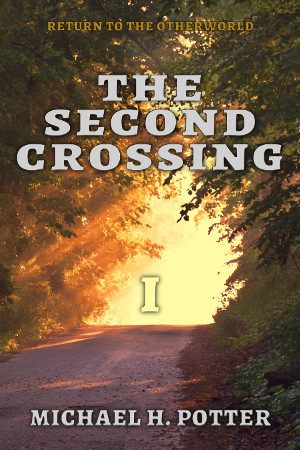🖼🗣 is becoming quite the little language. In the first three parts, you saw the basic outline of how we can take the wide array of emoji characters available in Unicode and contort them into a hieroglyphic script for modern times. Now, we’ll take another step by looking into the many ways in which we can construct new words from the building blocks we’ve been given.
Derivation
First of all, we need to make a distinction between the two different types of combining we can do. Derivation is mostly a grammatical process; it turns nouns into verbs, for example. Almost all languages have at least some derivational processes, and they tend to fall into a few major categories. 🖼🗣 is no exception, so we’ll look at these now. Later, we’ll turn to compounding, where we take individual words and combine them to create something new.
All of the script’s derivations are suffixes. We’ve already met a few, but here’s a complete list. (Note that tense markers, the plural and singular markers, and others like those are considered inflectional, so they’re not listed here.)
-
〰 – This sign converts a word into an adjective. Usually, it’s a “quality” adjective: a 🧒 (child) is young, so 🧒〰 means “young”.
-
▪ – This sign forms diminutives. These are “small” forms of words (typically nouns or adjectives) that indicate a lesser degree or amount: 🏙 “city” becomes 🏙▪ “town”, and ❄ “cold” turns into ❄▪ “chilly”.
-
◼ – This sign changes an adjective or verb into a noun representing something to do with them. So we might turn 🍴 “to eat” into 🍴◼ “meal”, because a meal is something you eat.
-
⬛ – The opposite of ▪, this sign creates superlative or augmentative forms. Linguistically, those are two different things, but they both pertain to an increase of a quality. With adjectives, ⬛ forms a superlative: 💪 “strong” becomes 💪⬛ “strongest”; this is really an inflection rather than a derivation. When used on a noun, however, the connotation is slightly different: 🌧 “rain” can become 🌧⬛ “torrent, flood”.
-
🔻 – This marks a negative or inverse connotation. Usually, there’s already another word available, but using this suffix means you’re focusing on what something is not. An example might be 👍 “good” becoming 👍🔻 “not good”. It’s not quite the same as 👎 “bad”, but it’s close.
-
🔺 – This is the counterpart to 🔻. It marks a positive connotation, which you may think has little use, but it can also function as an intensifier, a bit like “definitely” or (in colloquial speech) “literally” in English.
-
➡ – As we have seen in previous parts, this forms verbs from other words. No examples needed here, because you should already get the gist.
These are the main derivations in 🖼🗣. Others do exist, but they have more specialized meanings, and they’re probably better analyzed as compounds, which we’ll get to right now.
Compounding
Most vocabulary in the script is formed by compounding. This process, much more general (yet also a bit more idiosyncratic) than derivation, allows us to express essentially any concept through a combination of 🖼🗣 symbols. The rules are a little involved, so pay close attention.
General compounding rules
-
Any lexical symbol can be used in a compound. Those with a purely grammatical function (such as the derivational affixes above) aren’t allowed, except in very specific circumstances. (These form what’s called a closed class of words, and they don’t really concern us here.)
-
The minimum number of symbols is 2, but the only upper limit is imagination. Realistically, however, most compounds will have at most 4 symbols.
-
One element of the compound is the head, while the rest are considered modifiers. (Linguists note that the head element isn’t necessarily the semantic head, but it usually is.)
-
The head determines the part of speech of the compound. Thus, compounds with heads that are nouns will be nouns themselves.
-
Verb compounds are head-initial, while all others are head-final.
Noun-noun compounds
Compounds of multiple nouns are probably the easiest to understand. Almost all of them tend to denote specificity. In other words, the modifiers define a specific type of the noun represented by the head. We’ve already seen 🐕🏠 “doghouse”, for instance, but here are a few more:
- 🐦🛁, “birdbath”
- 🚲🛣, “bike path”
- ✋🔫, “handgun”
- 📰📄, “newspaper”
Simple enough, right? These are mostly English-oriented, but the same principles are common across many languages.
Adjective-noun compounds
These are almost the same as the noun-noun compounds above, but the modifier is an adjective instead:
- 💨🛣, “fast lane”
- ♨🛁, “hot tub”
- 🤓☎, “smartphone”
Again, there’s not much to it.
Adjective-headed compounds
When an adjective is the head, the modifiers shift the base meaning toward their own. It’s a little hard to explain in prose, so we’ll try a few examples instead:
- 🌹🔴, “rose red”
- 🏛👴, “ancient”
- 👿🖤, “devilish”
Unlike nominal compounds, these are often less transparent, but that’s okay.
Verb-headed compounds
Verbal compounds are the hardest. For one thing, they’re “inverted”, with the head coming first. For another, pinning down their meaning isn’t easy. In general, more active verbs tend to form compounds whose meanings are related to the head, while “static” verbs function a lot more like adjectives.
- 🏃💨, “sprint”
- 🤝💬, “introduce”
- 👐🆓, “donate”
Moving on
Part 5 of this series will be a chance to pause and take stock. Instead of grammar and word-building, I’ll provide a lot more vocabulary, roots and compounds alike. I hope to see you then!
